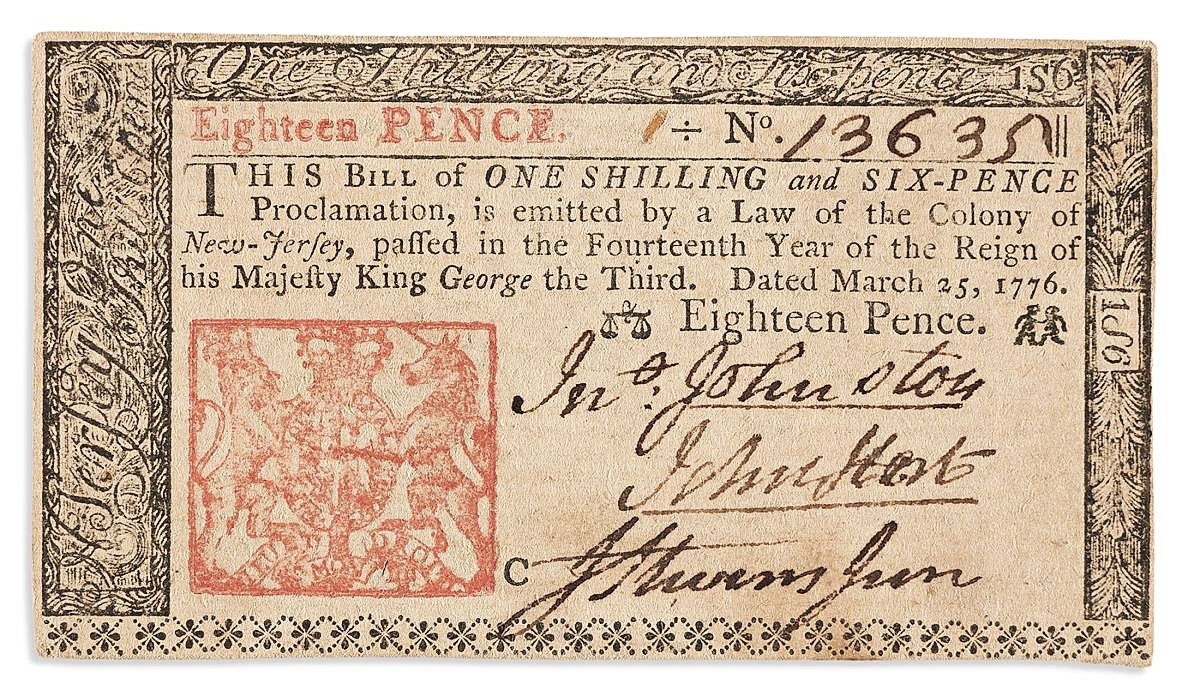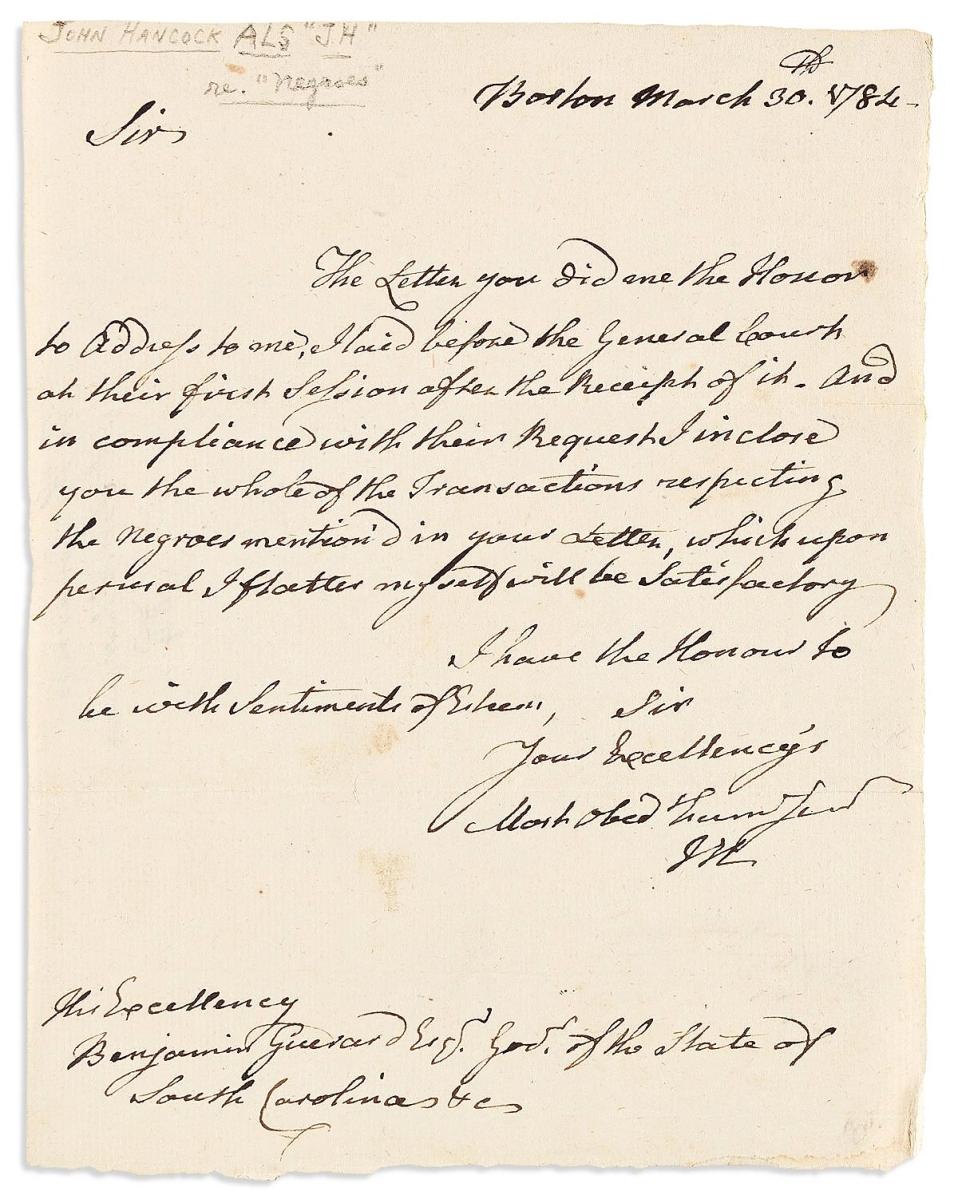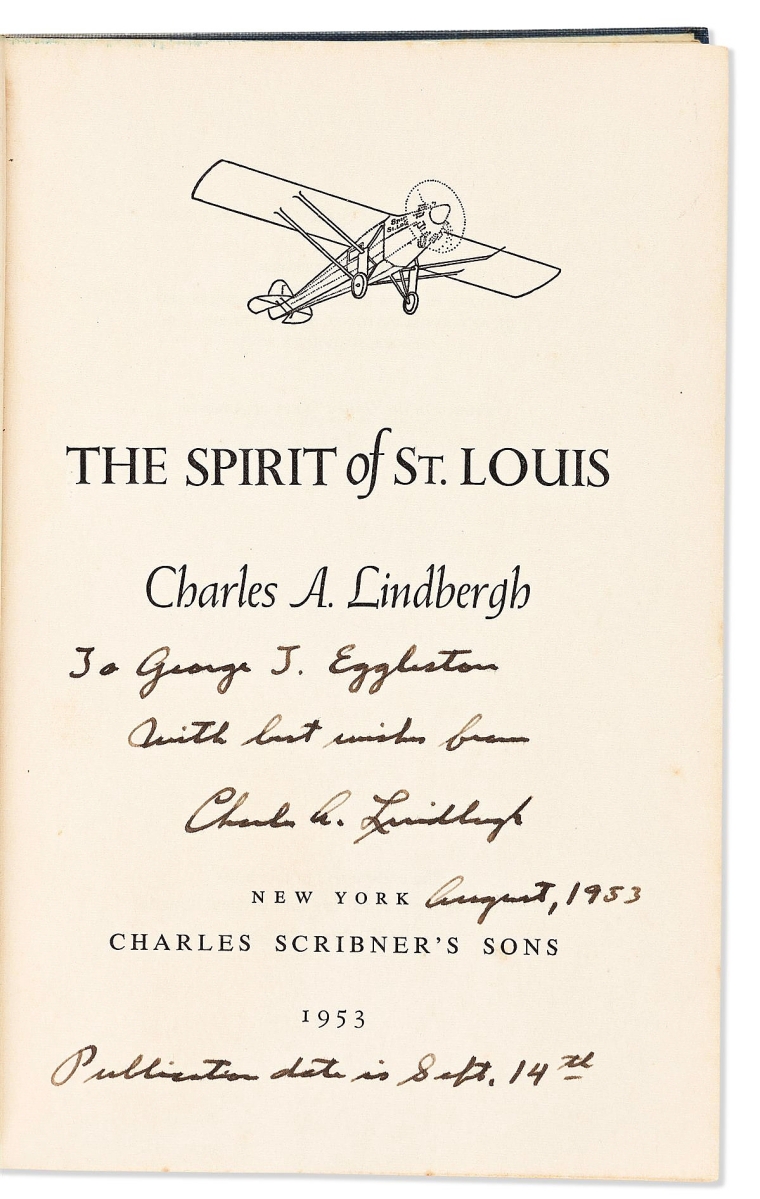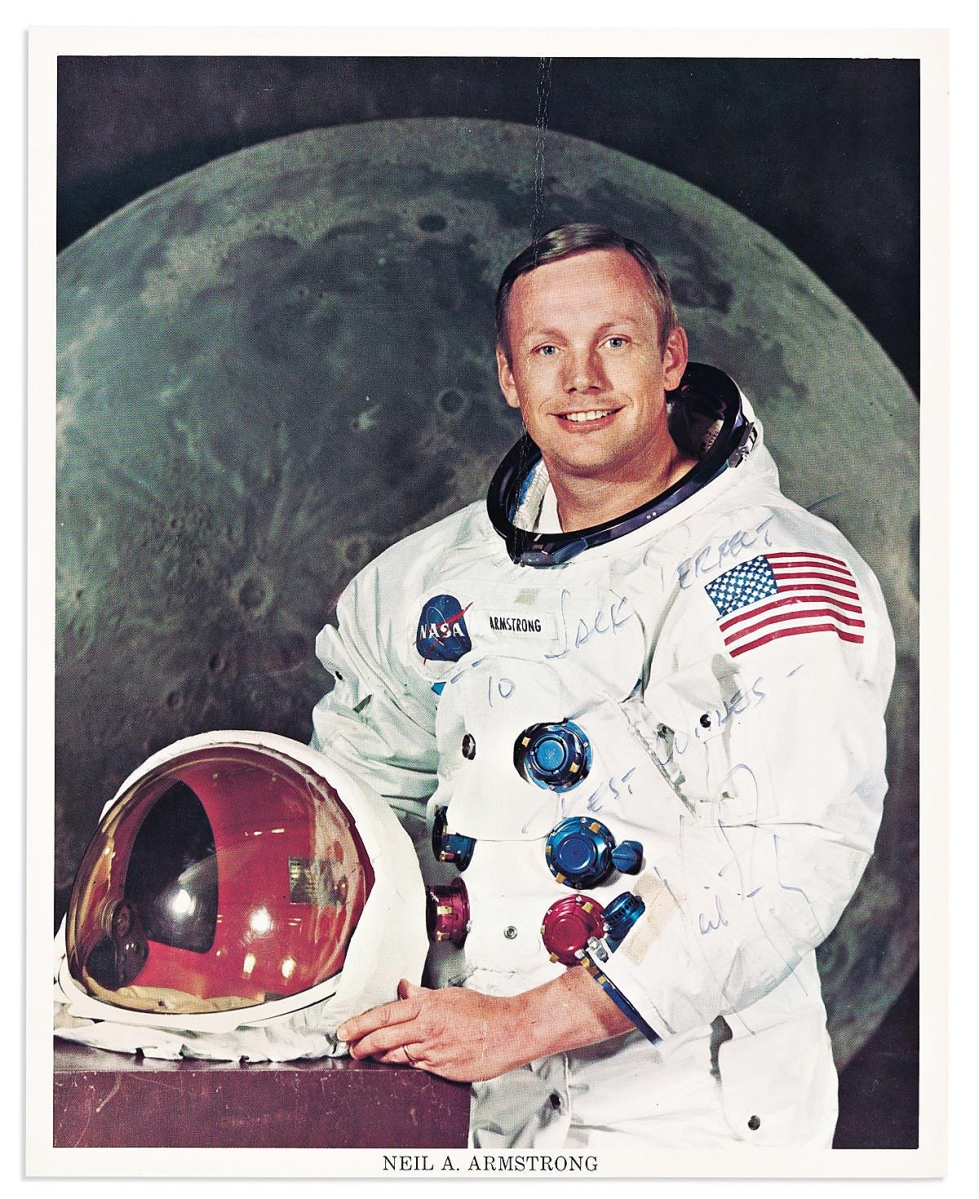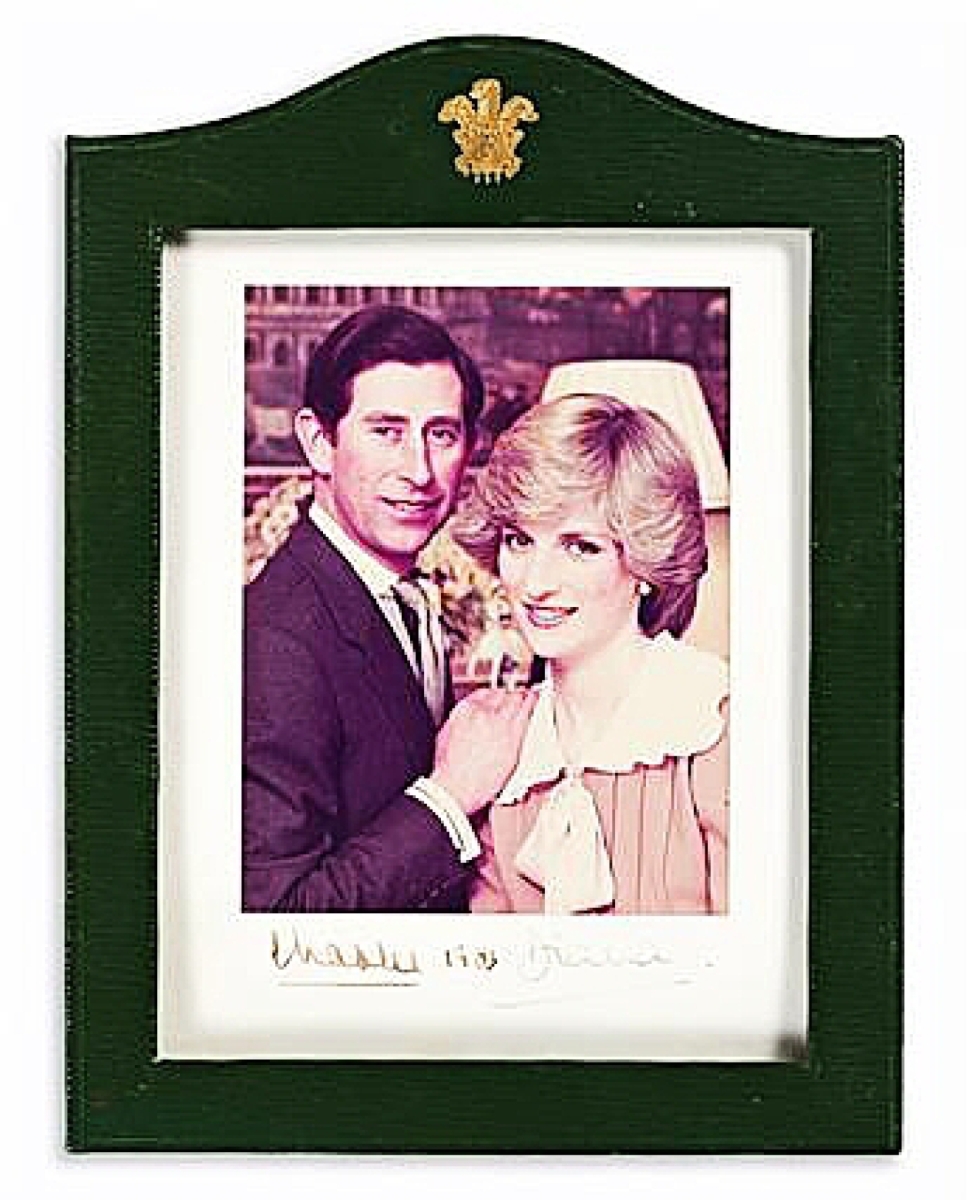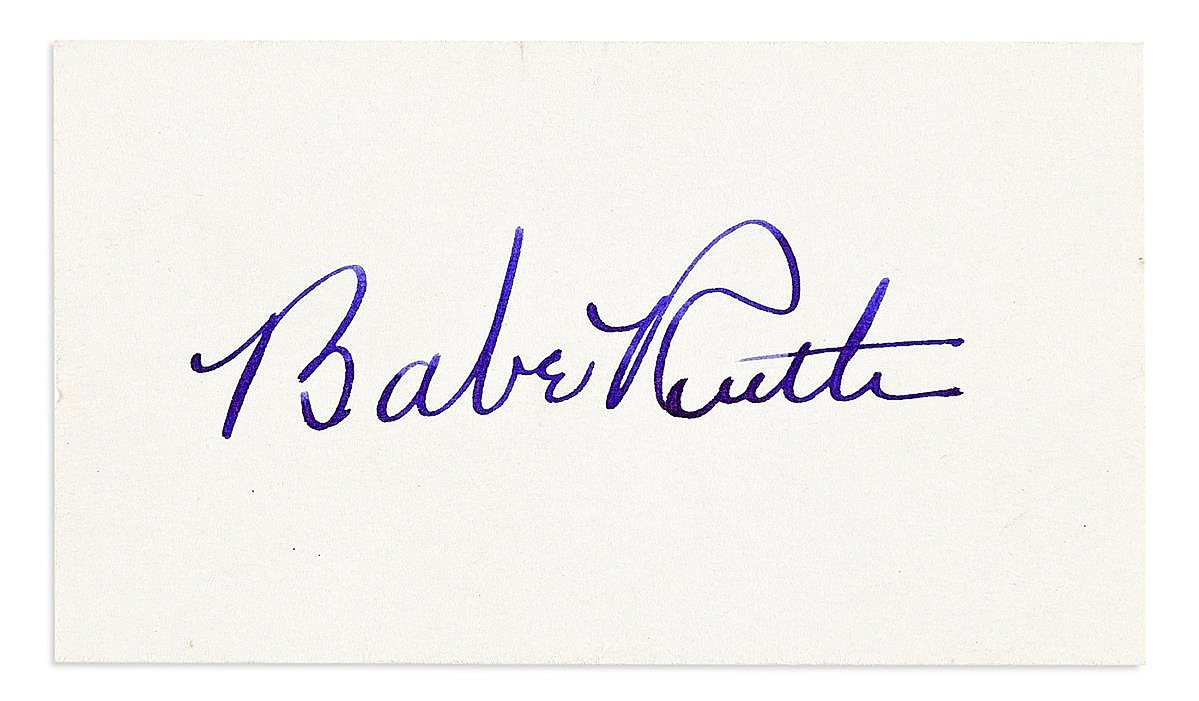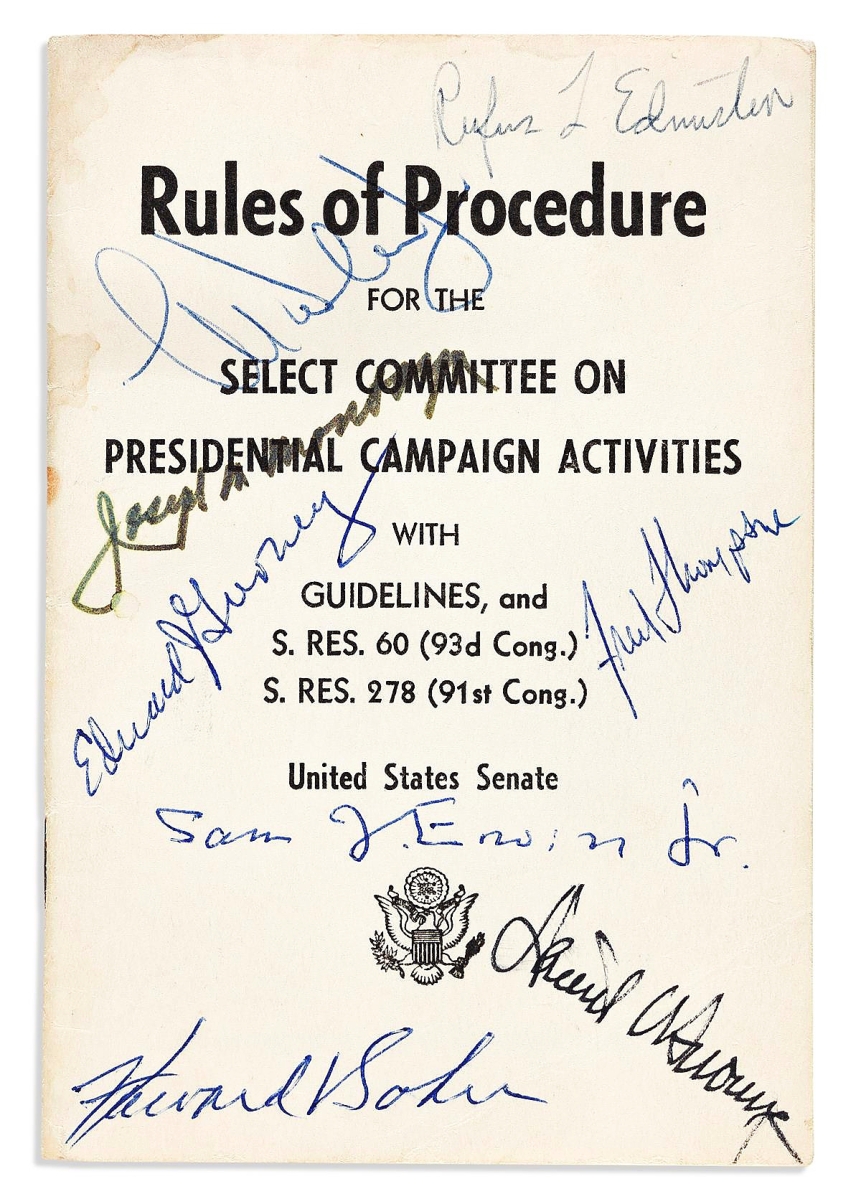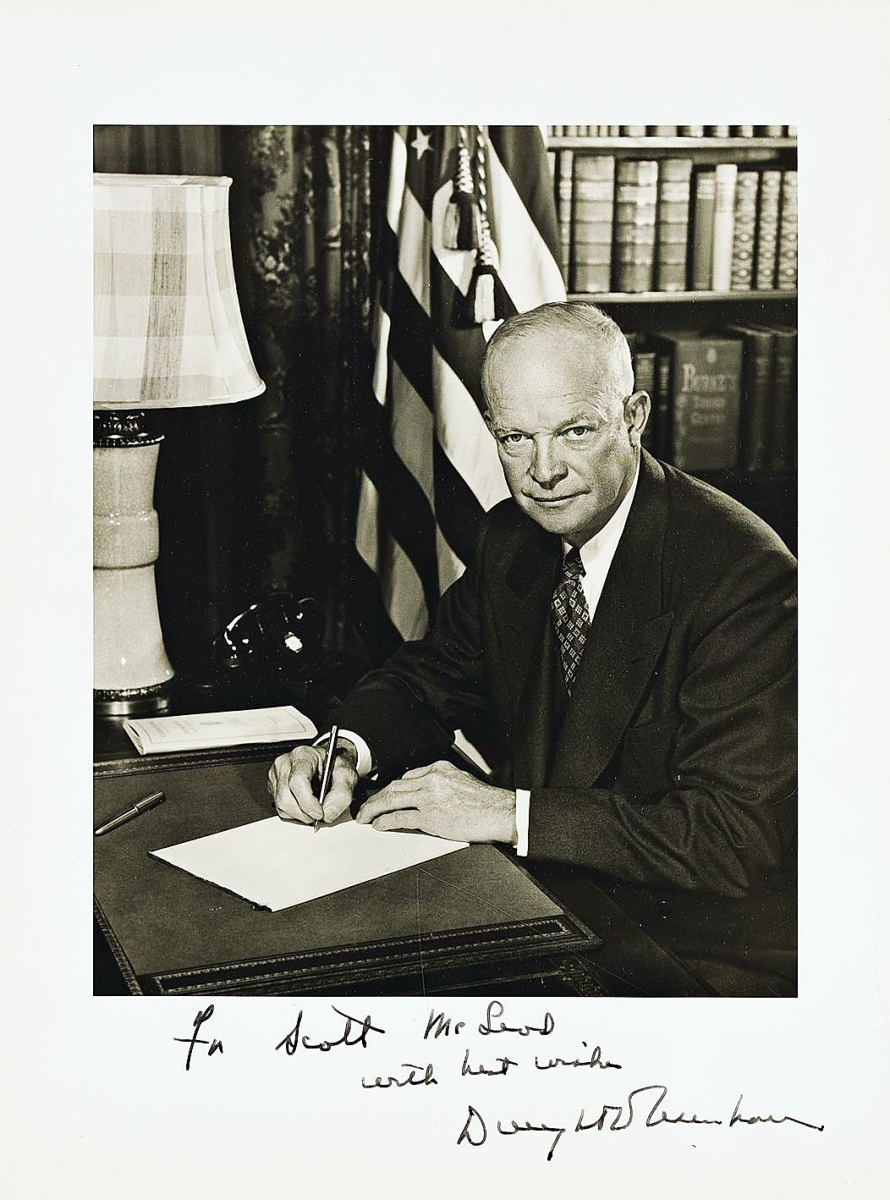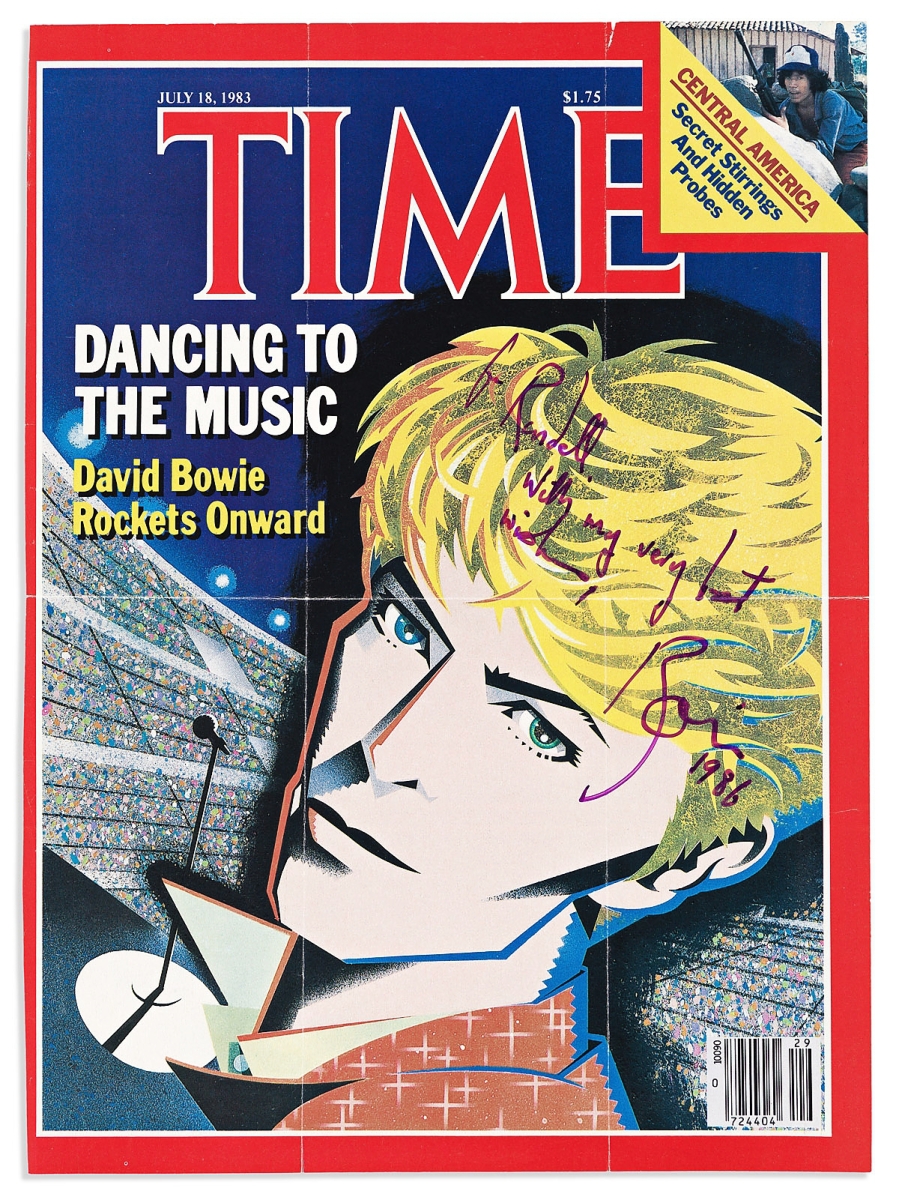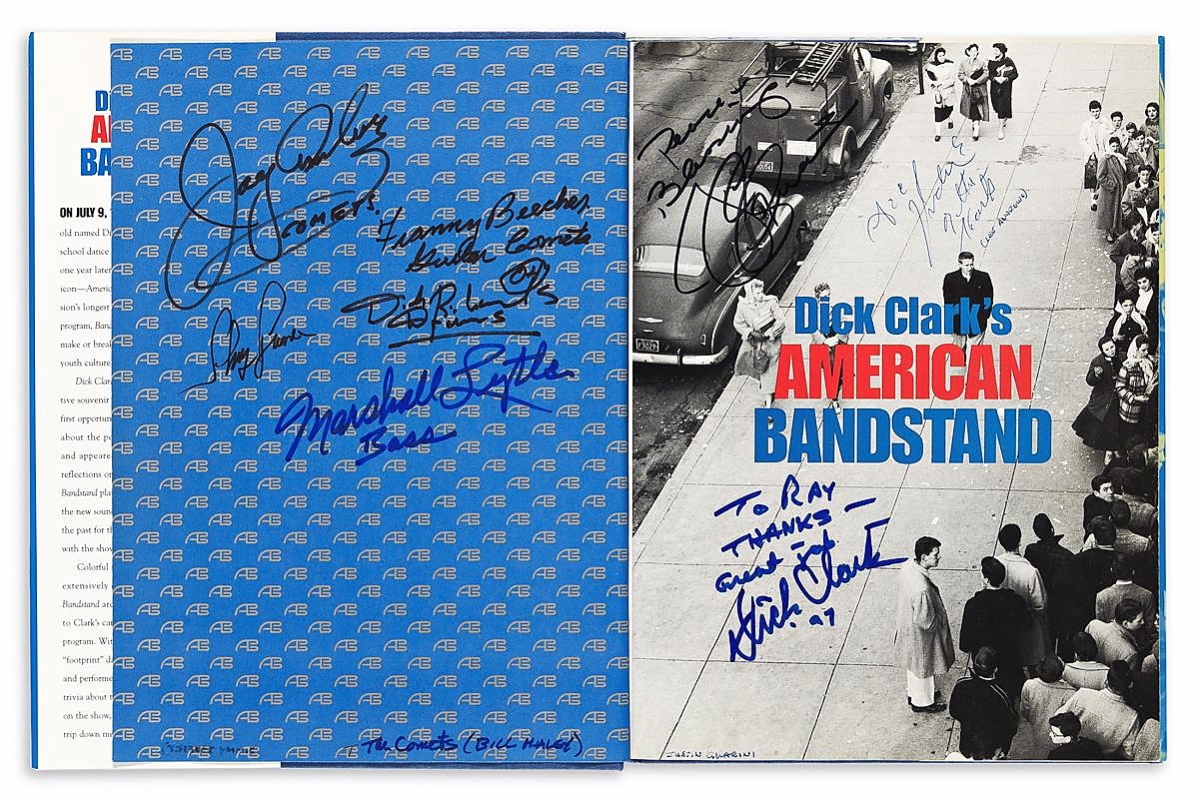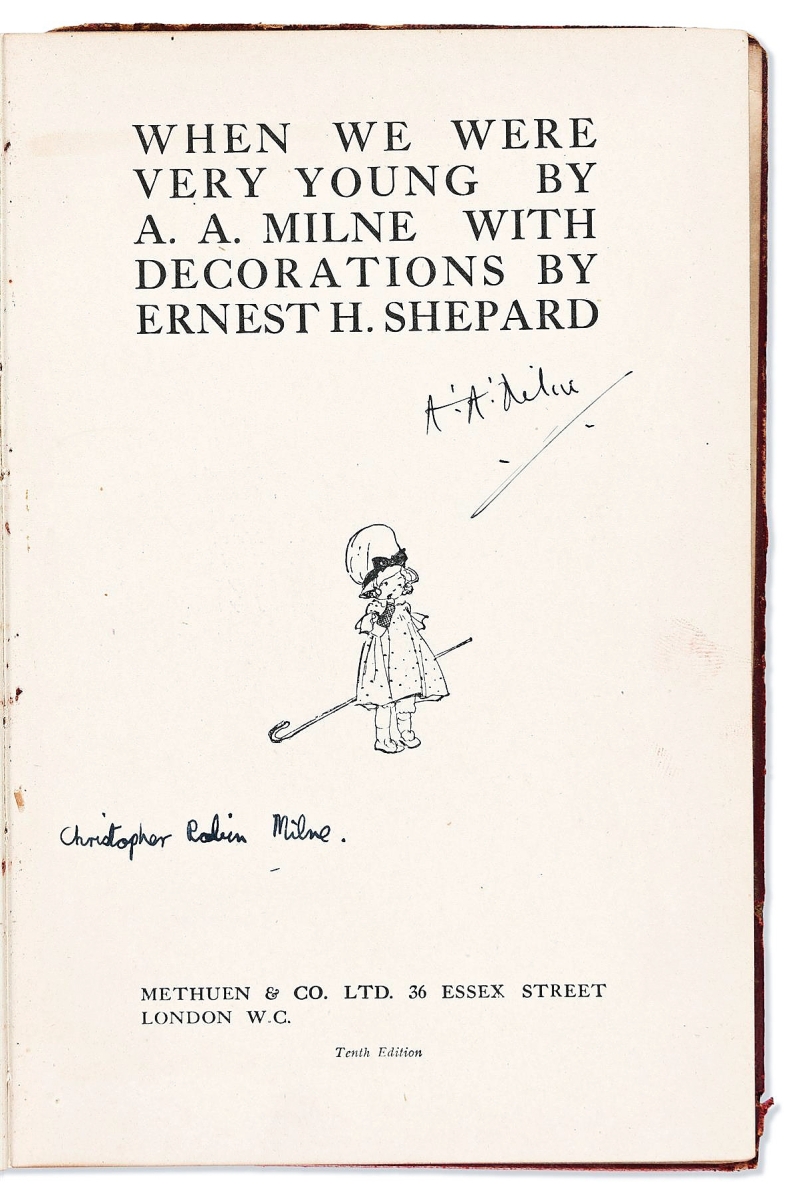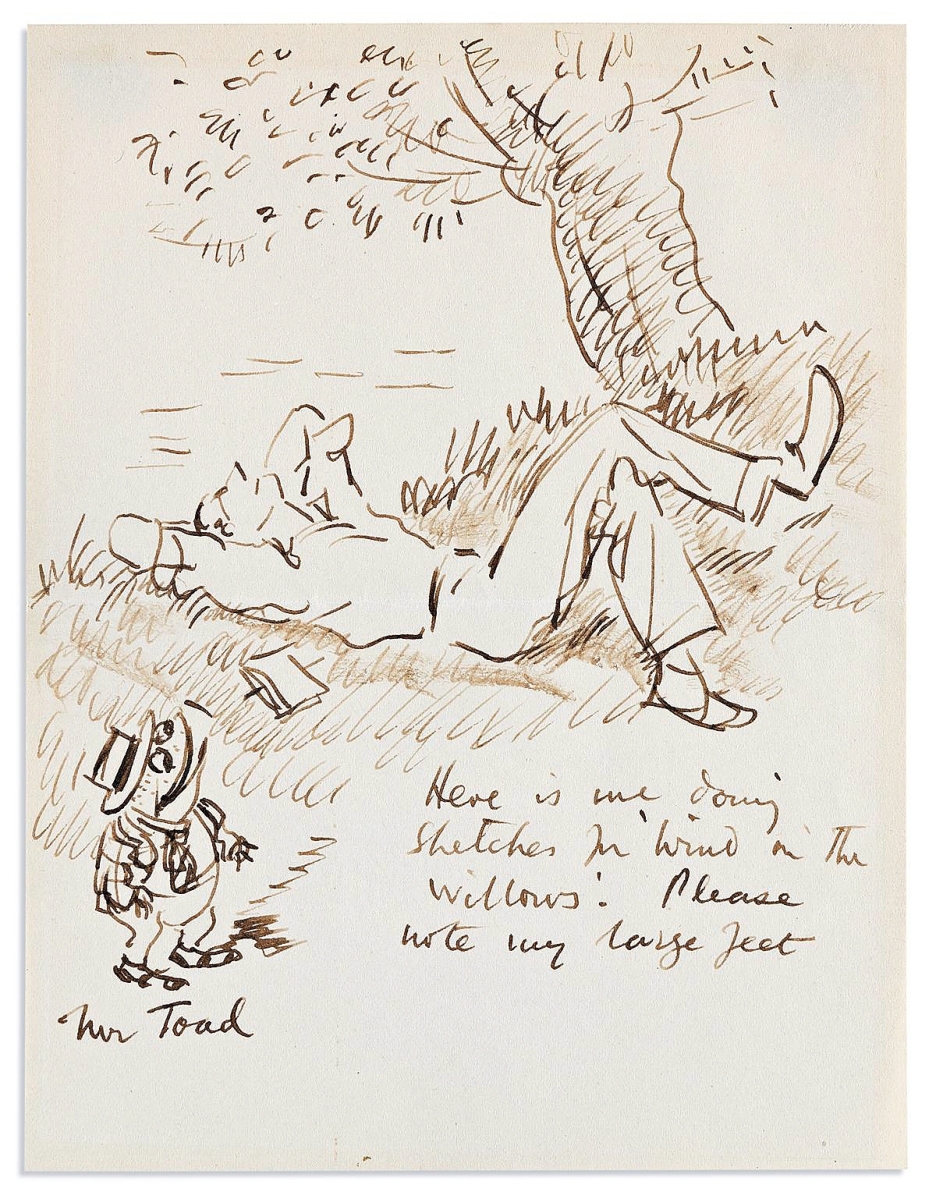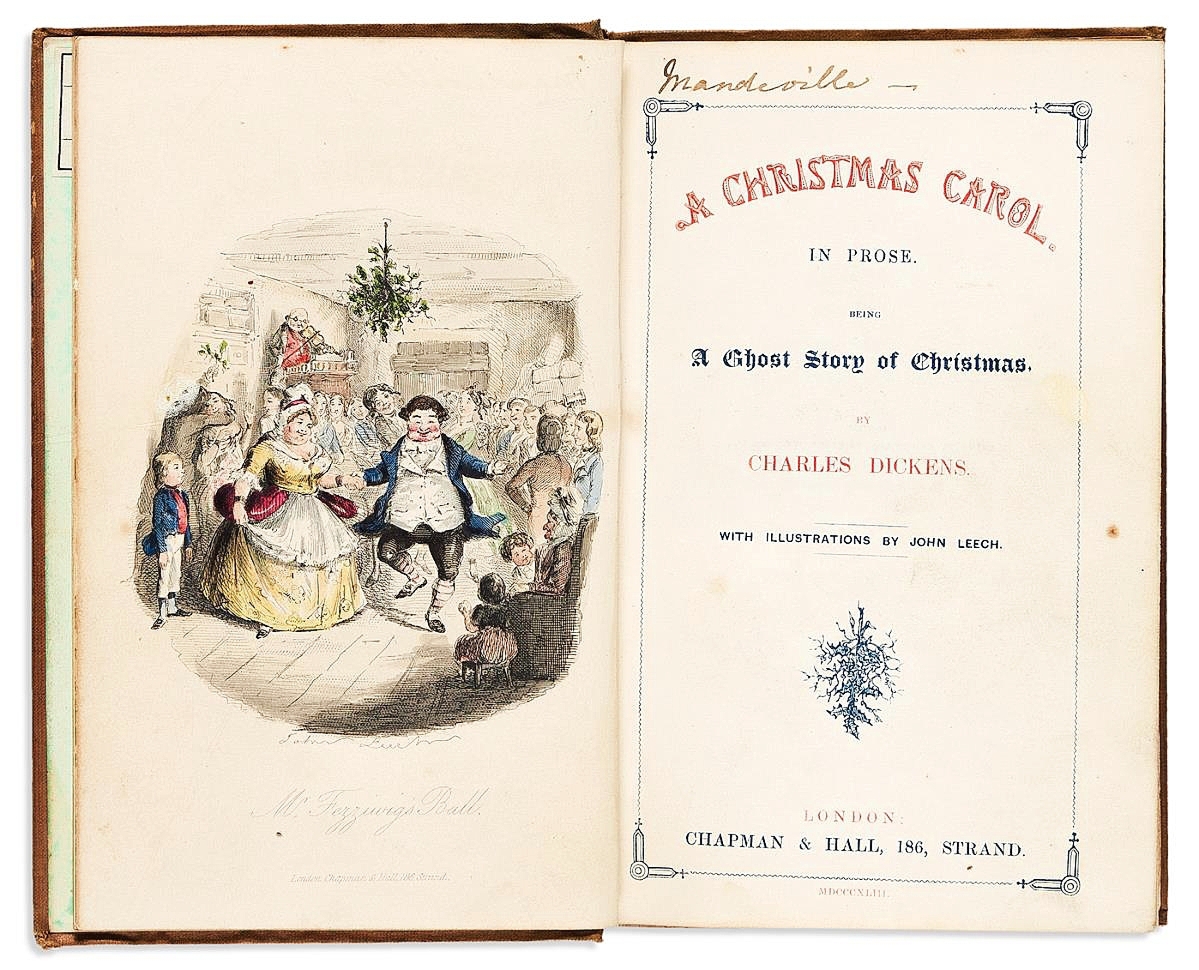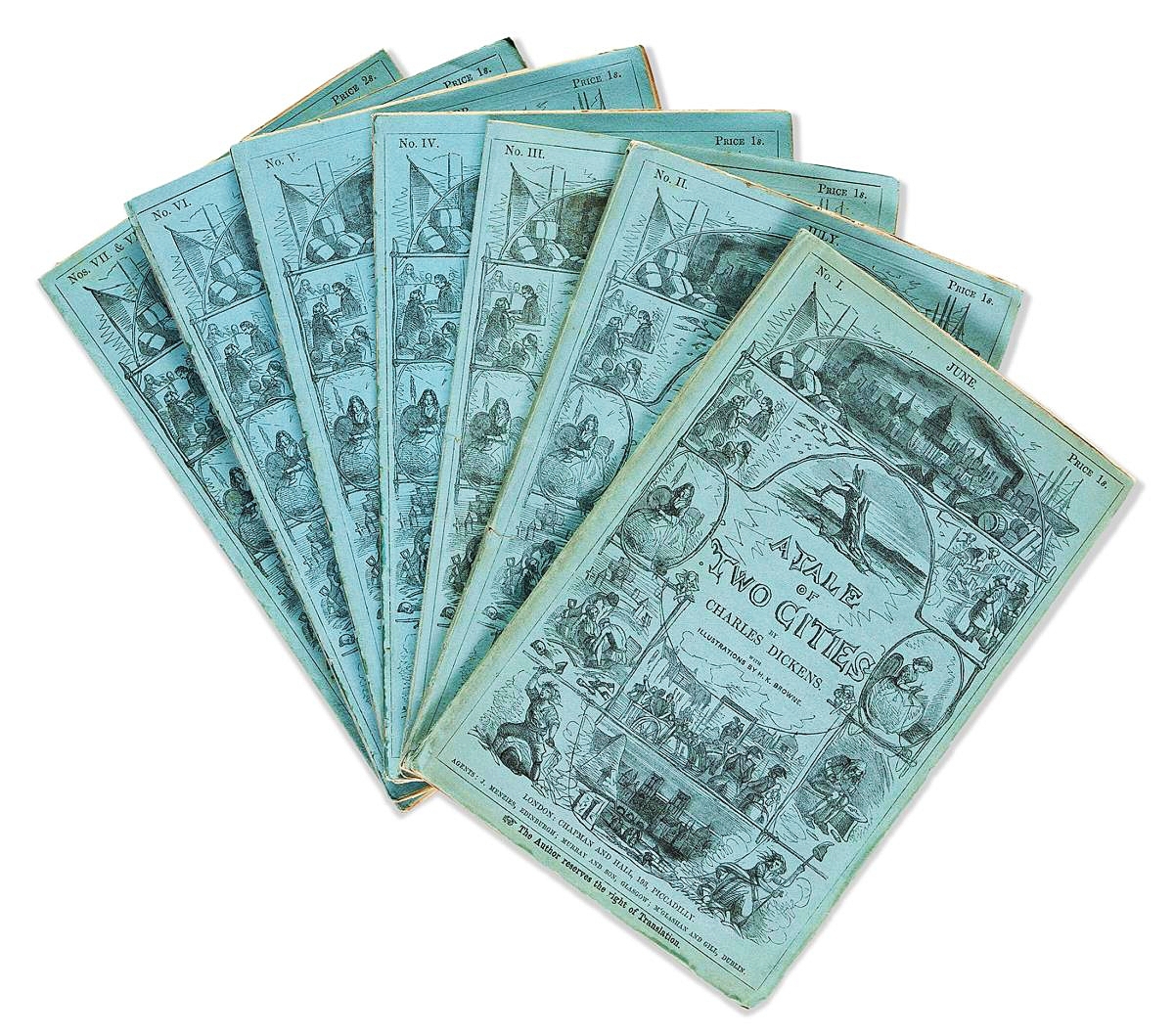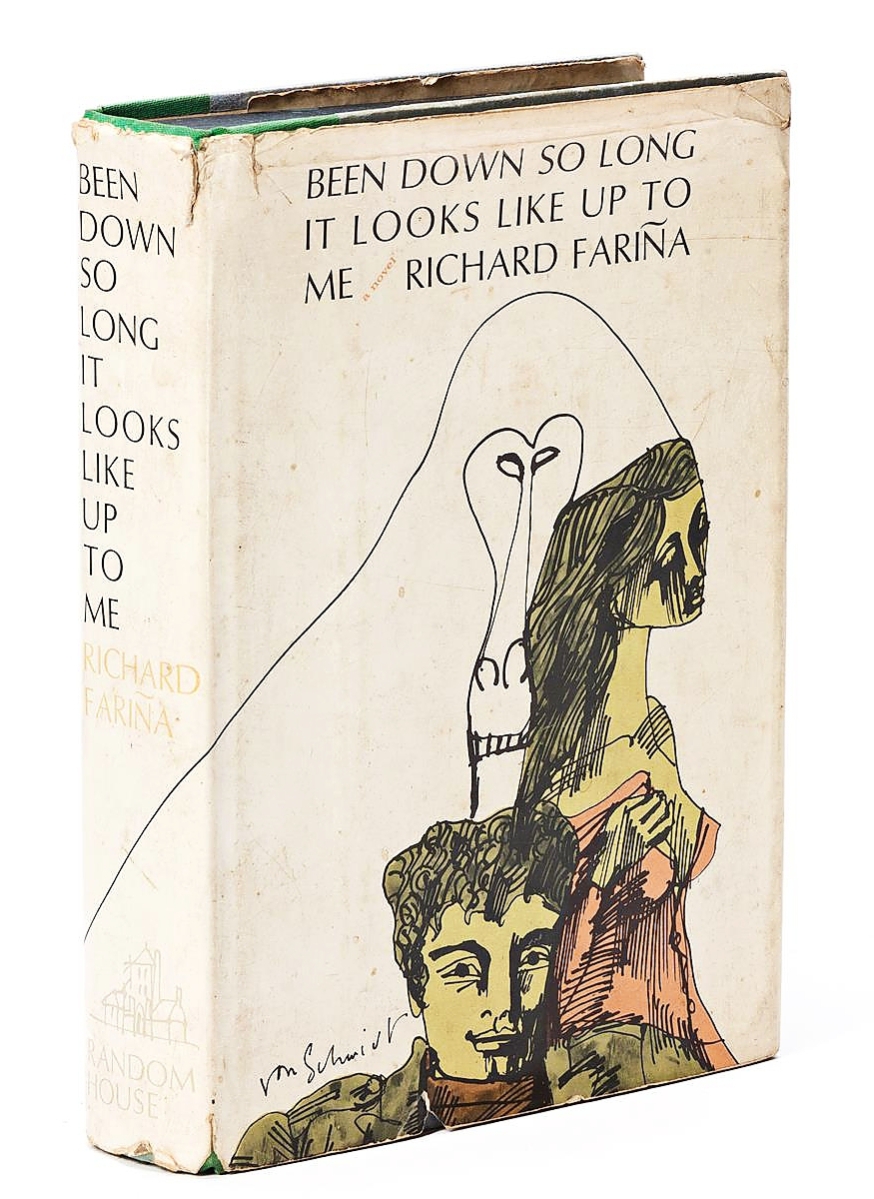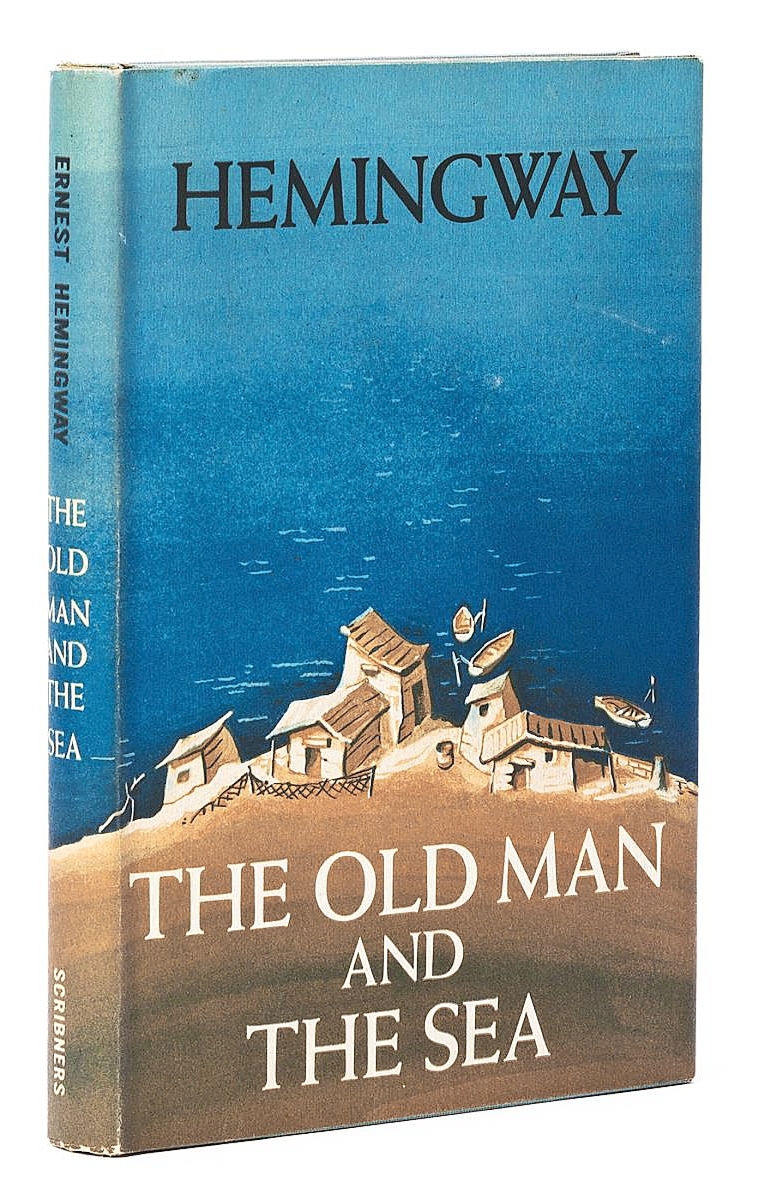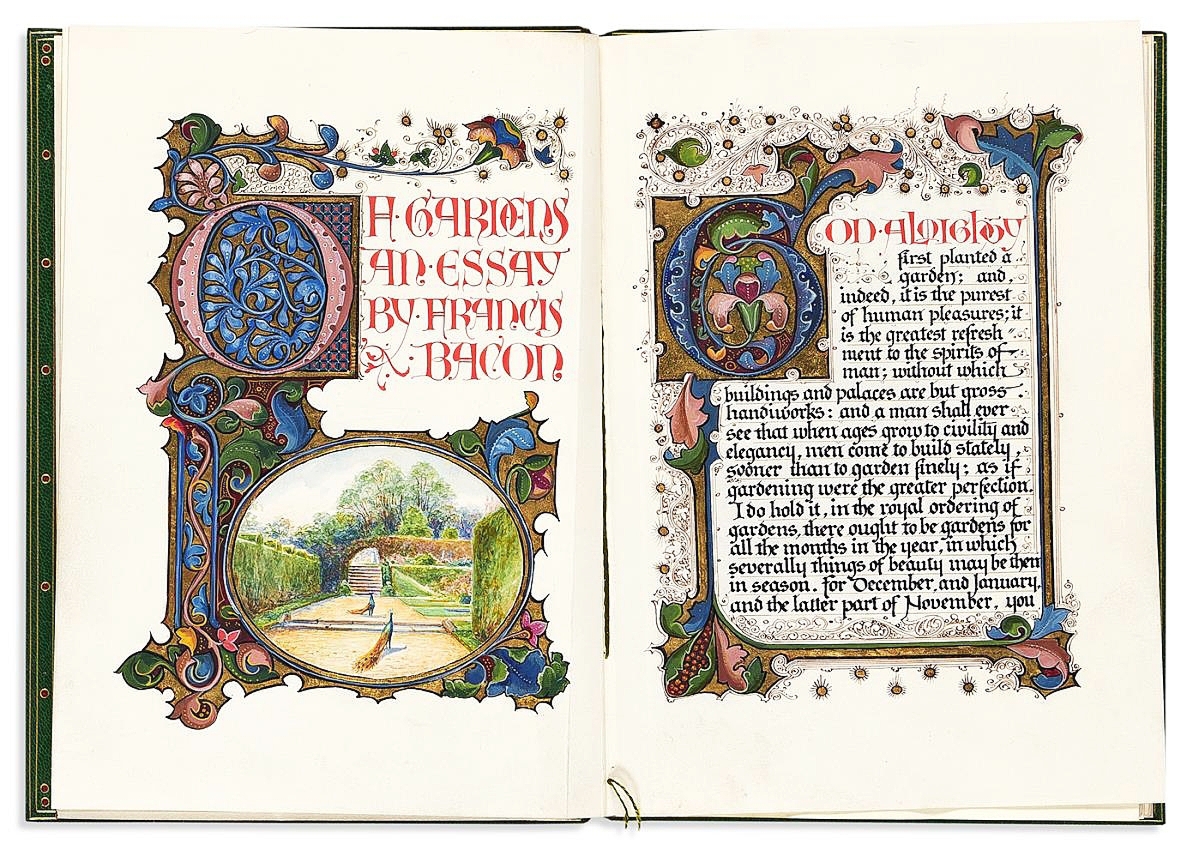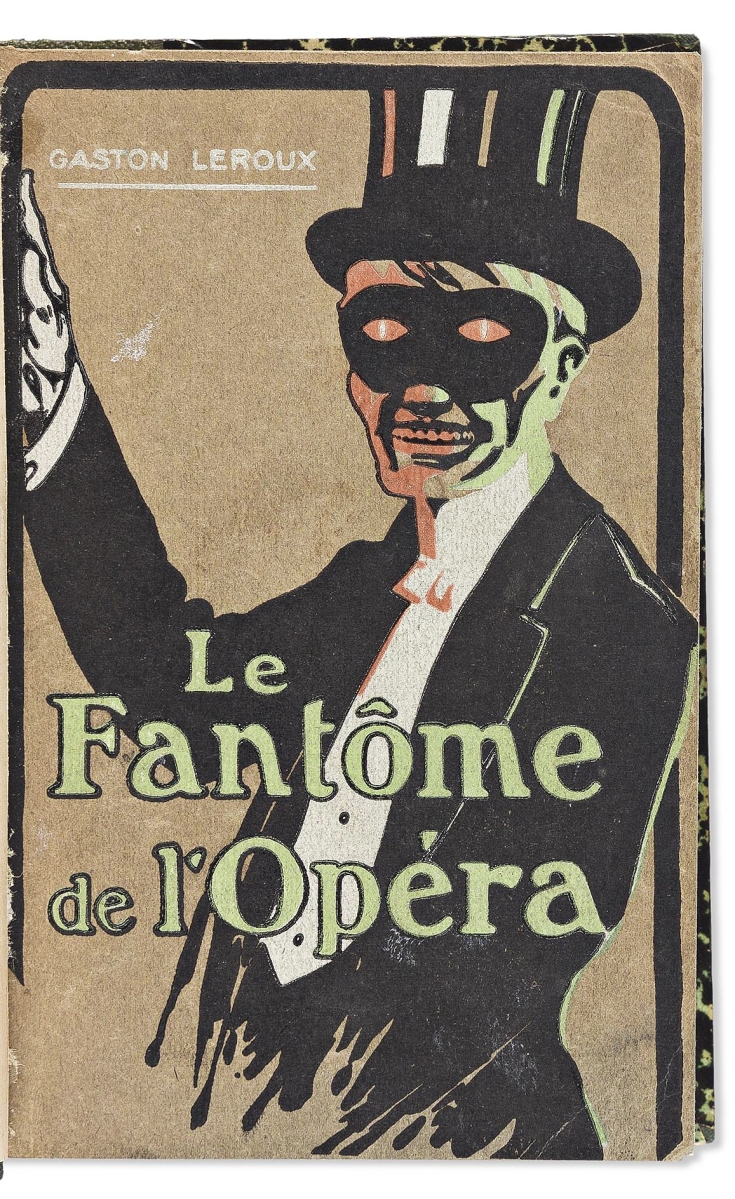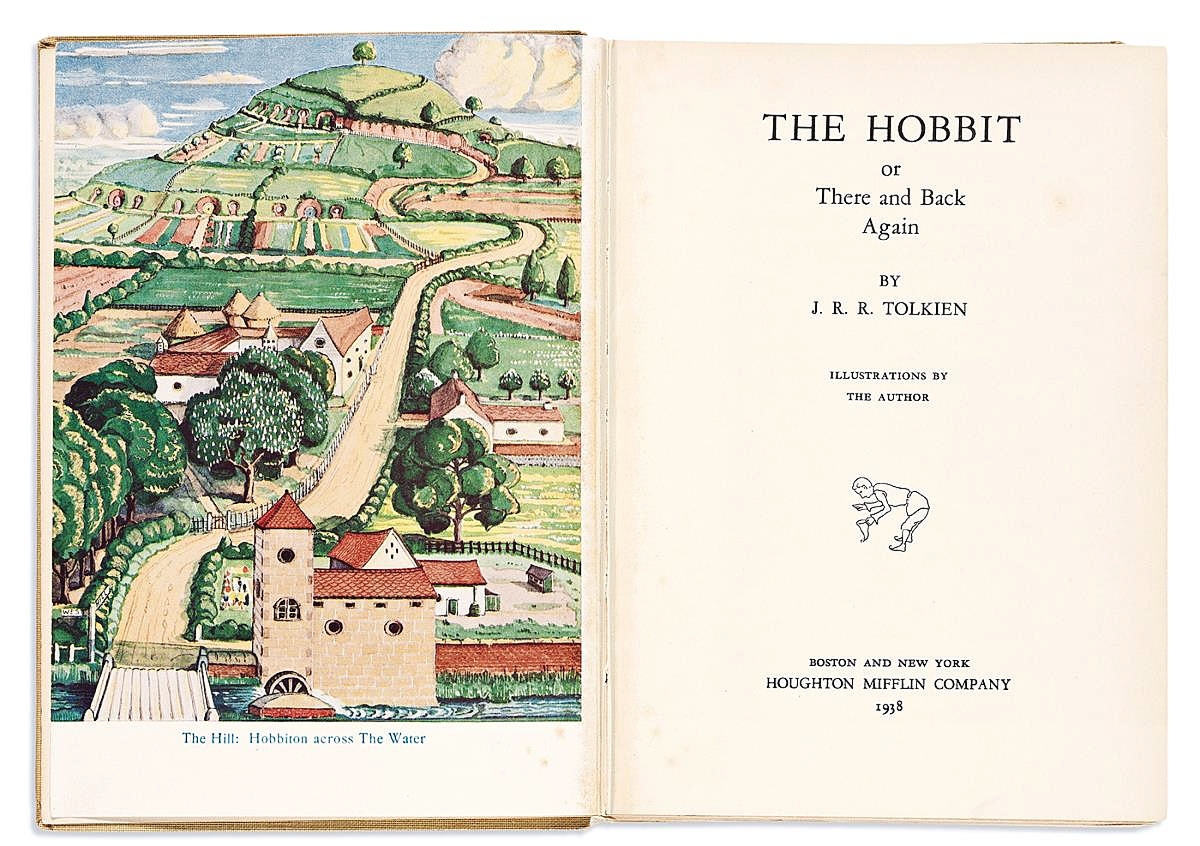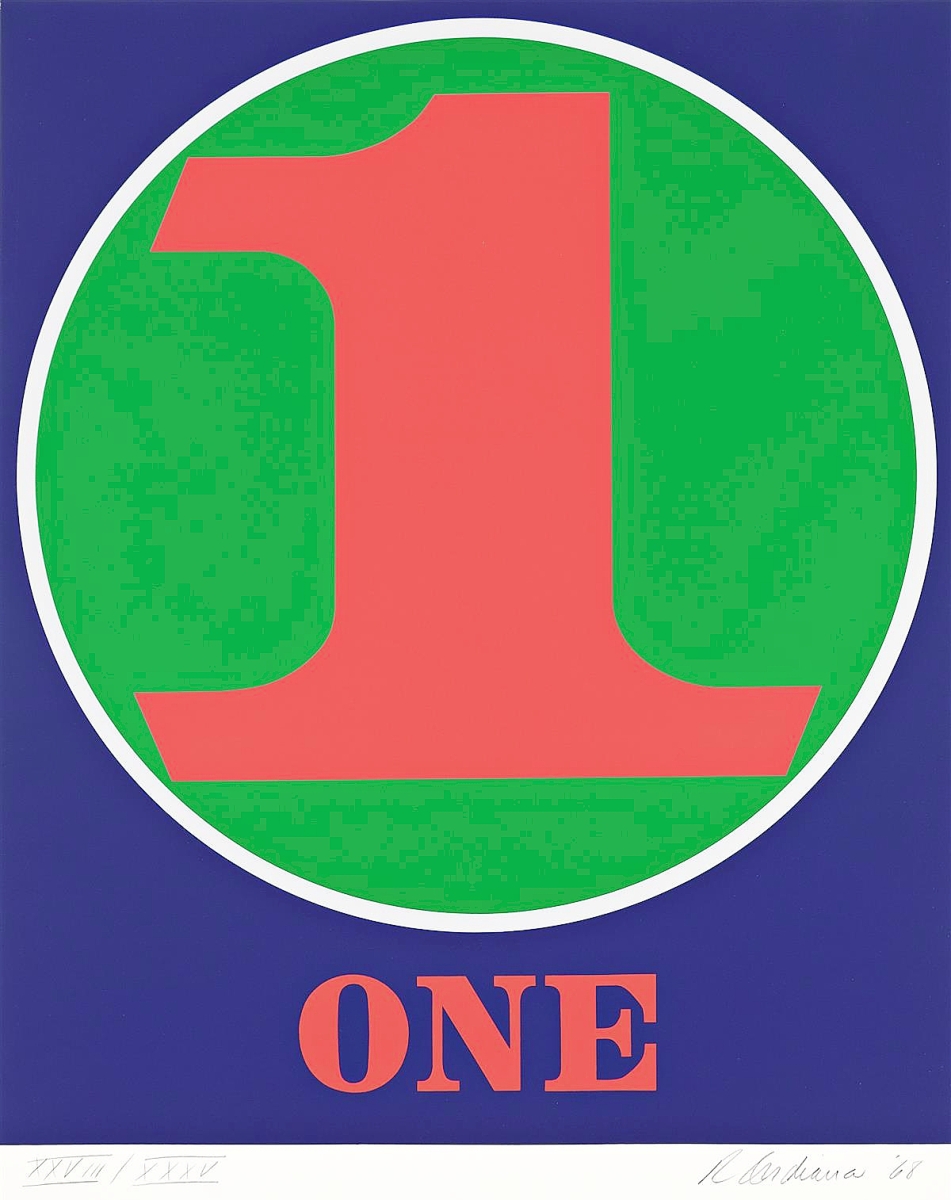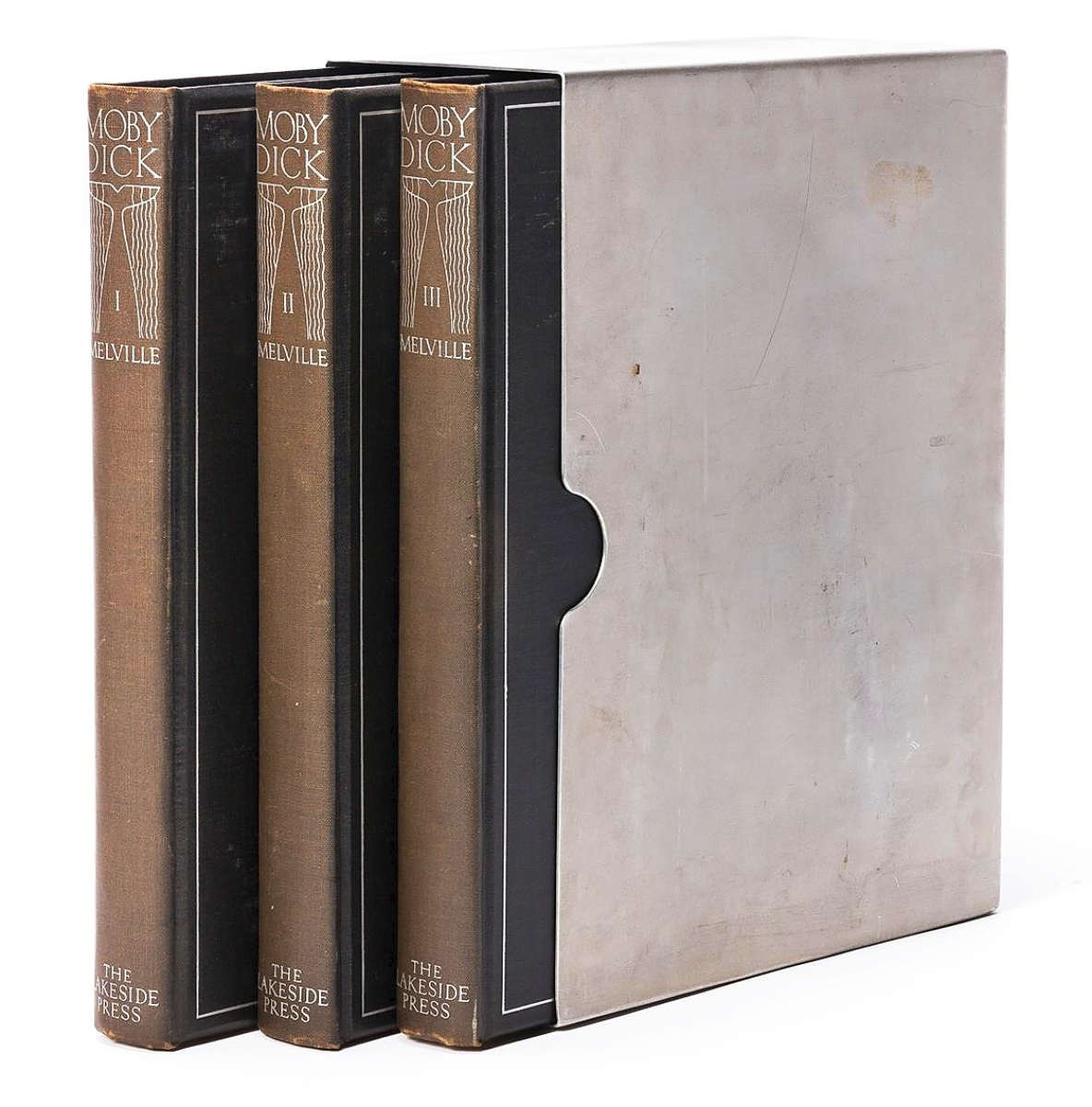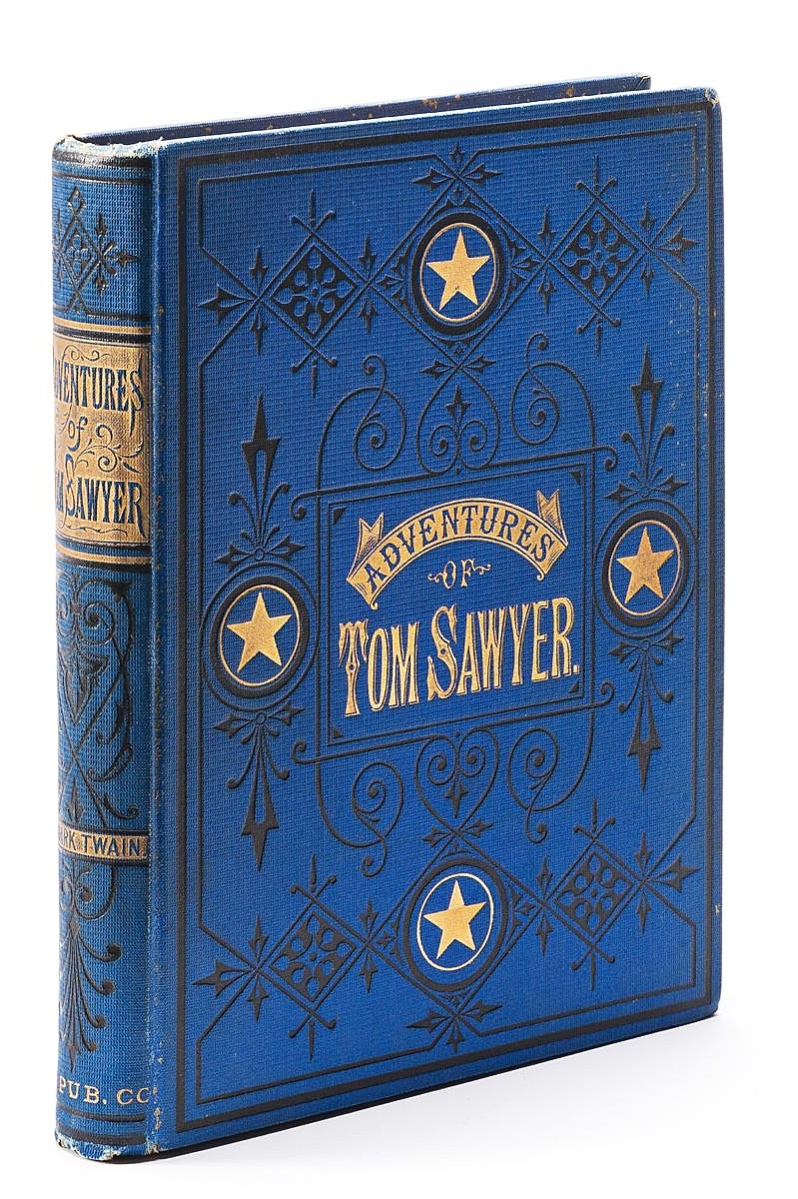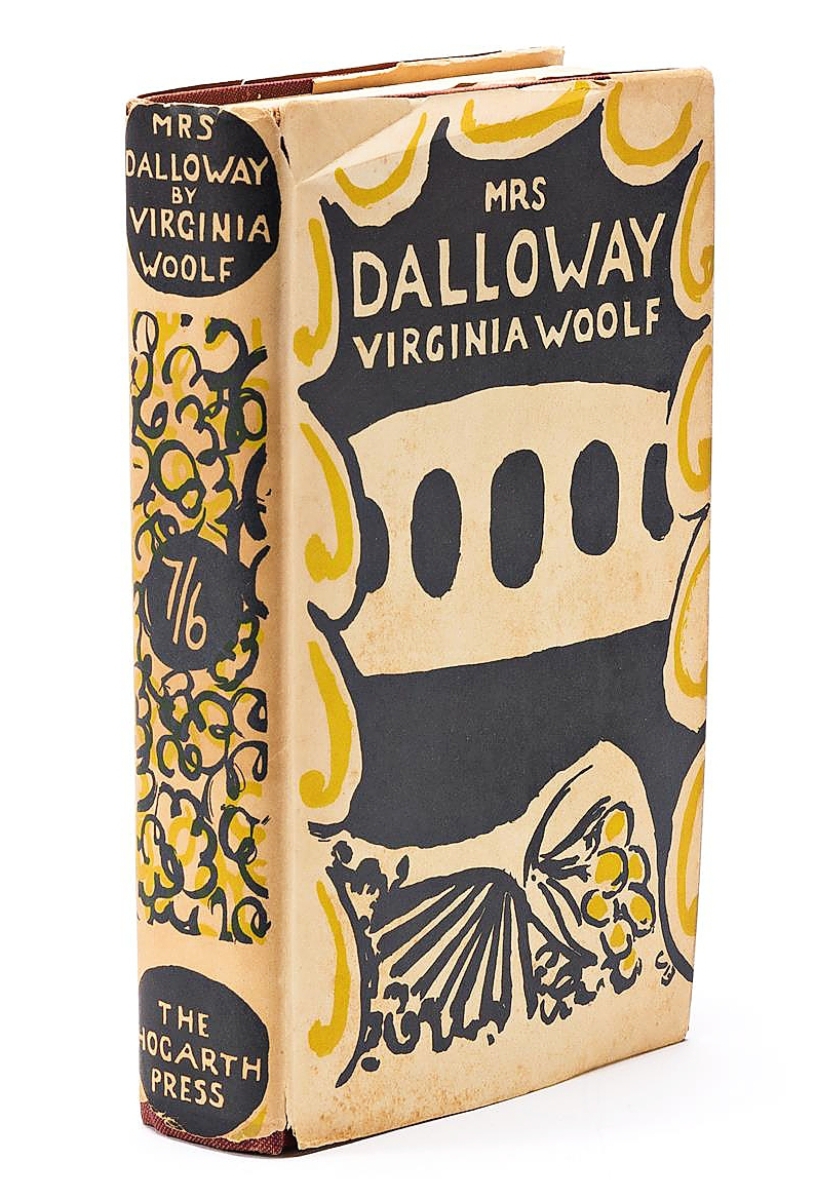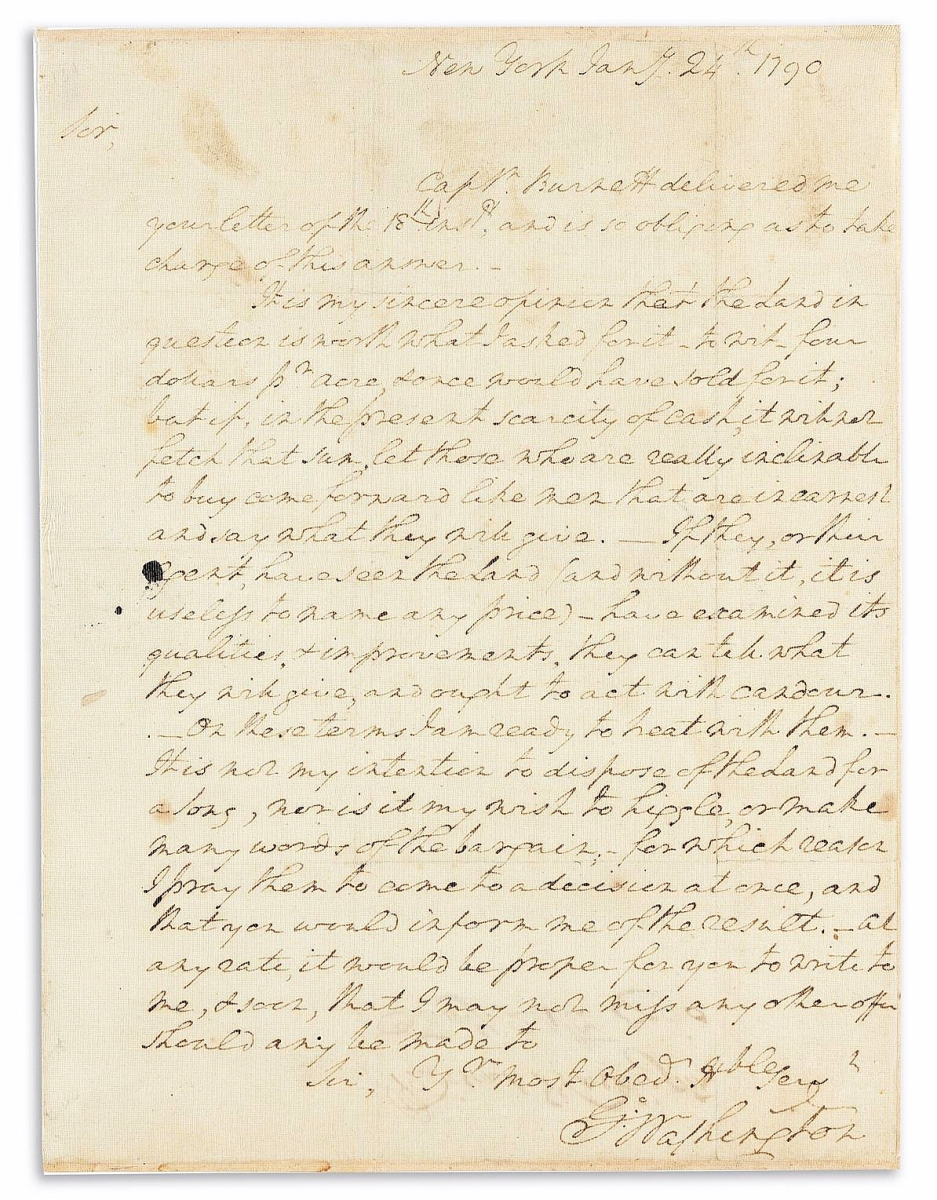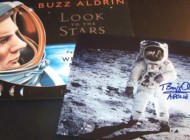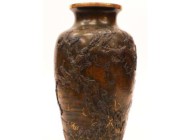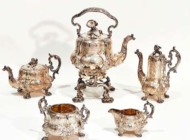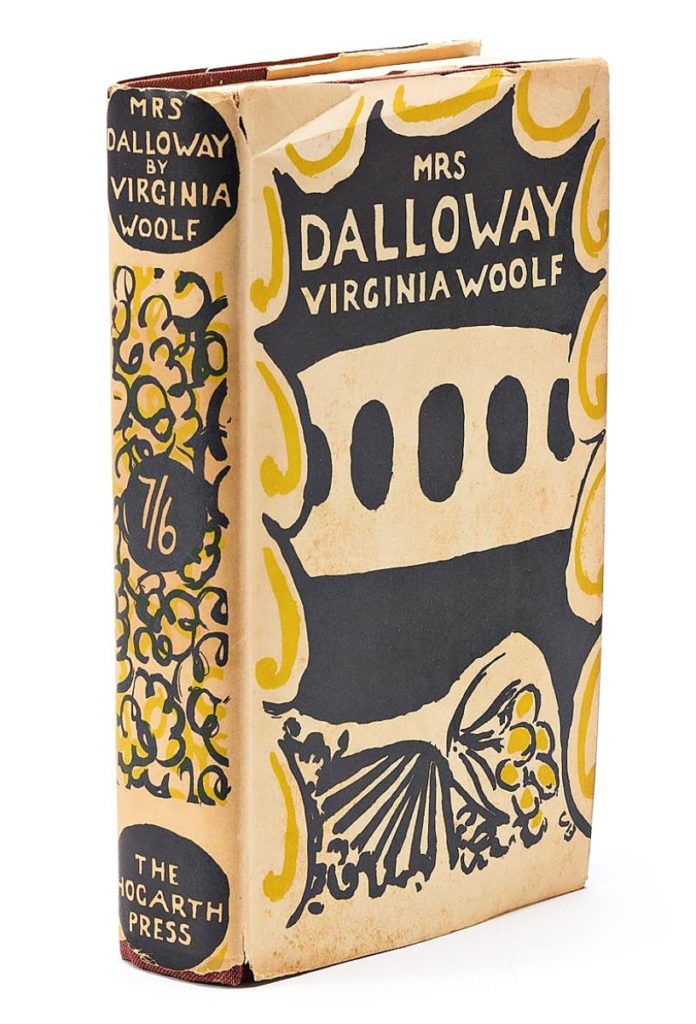
Virginia Wolfe’s Mrs Dalloway tied with a George Washington letter for the sale’s highest price, $30,000. Only about 2,000 copies of this book were published and this one retained its original dust jacket.
Review by Rick Russack, Photos Courtesy Swann Auction Galleries
NEW YORK CITY – Swann Auction Galleries’ sale of Fine Books and Autographs on March 2 ranged from signed photos of Princess Diana and Prince Charles to George Washington letters and first editions of Moby-Dick and Tom Sawyer. In between, there were numerous autographs of presidents, letters from artists, signed photographs of astronauts, Watergate material, fine press and illustrated books and still more. Two items, a George Washington letter and a Virginia Wolfe first edition both earned $30,000 and shared the sale’s top-lot honor.
Autographed material was sold first. Letters written by well-known men and women from history often reveal little known aspects of the personality of people we thought we knew well and some of their personal business affairs. Such was the case with a one-page handwritten letter by George Washington concerning a private business transaction. The letter was written during his presidency – in 1790 – to Ebenezer Tucker, who had served under him in the Revolutionary War. It discussed the desired character of prospective buyers of land he intended to sell. In the letter, Washington said that once prospective buyers had examined the land in Pennsylvania, and “act like fair and candid men – I am ready to treat with them. It is not my intention to dispose of the land for a song, nor is it my wish to higgle, or make many words to the bargain – for which reason I pray them to come to a decision at once, and that you would inform me of the result.”
Other Washington items included a letter written during the Revolutionary War to James Bowdoin, president of the Council of Massachusetts Bay, which sold for $23,750. Washington requested that the colony supply needed howitzers, ammunition and gun powder. He told Bowdoin that General Knox would be in touch with him about the needed supplies and asks that “the Board will favor the Continent with a loan of the largest quantity they can spare.” Another signed Washington item referred to the Potomac Company, which he had founded to encourage western expansion of the country.
Before the sale, Marco Tomaschett, Swann’s autographs specialist, commented, “there’s significant early interest in the presidential and other Americana items, which is unsurprising, since this sale contains quite a few examples of uncommon autographs from that category. The Washington items will do well, as collectors are learning that his autographs are among the most certain to appreciate in value over the years. There are several groups of presidential autographs, some containing the signatures of consecutive presidents in long stretches. Those would be difficult to assemble at this point in time. Many of the items in the sale are from a collector who was active in the 1970s, when some material was more available.”
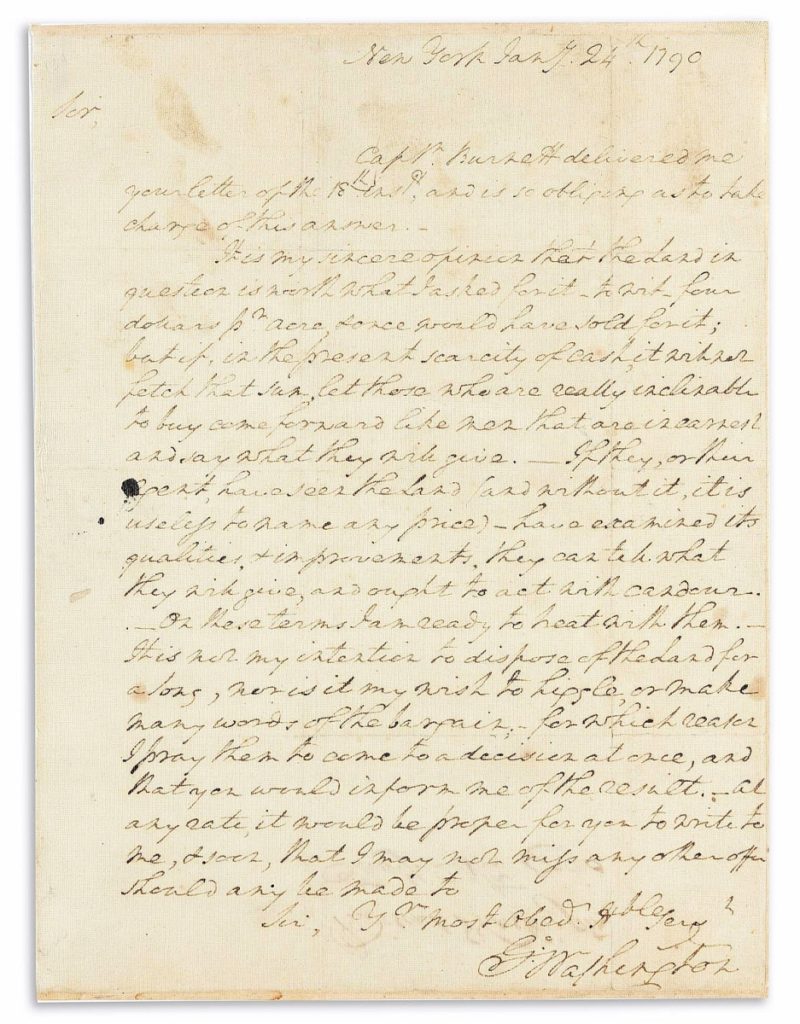
One of the two items selling for $30,000 was George Washington’s letter concerning a possible sale of land he owned in Pennsylvania. It was written in 1790 while he was president.
By the time the sale was over, these comments were borne out.
In addition to the Washington letters, other historical letters included one from vice president Aaron Burr to Caesar Augustus Rodney in which he discussed Alexander Hamilton, who he believed had cost him the presidency. It brought $12,500. Clipped signatures of Abraham Lincoln sold between $4,250 and $7,250 depending on whether there was other writing included. An autograph endorsement signed by Lincoln in which he grants freedom to a group of captured Confederates sold for $7,250. A lot of 24 clipped signatures of Nineteenth Century presidents, Madison through Buchanan, with multiple examples of some, earned $9,375. There was also a selection of items signed by William Henry Harrison, collections of White House cards, visiting cards, checks and franking signatures.
Many of the autographed letters had been written by artists, writers, scientists and other well-known people. Paul Gauguin wrote to his dealer, Ambrose Vollard, perhaps in 1903, acknowledging the receipt of money and asked whether his paintings or ceramics had been received. It realized $11,875. (Gauguin produced only about 100 ceramic pieces.) An archive of six letters by Renoir to the same art dealer brought $5,750. These letters discussed both artwork and personal comments on his health, the weather, etc. A letter and a fragment of a musical manuscript by Franz Liszt earned $4,750. Somewhat more contemporary, a 1983 issue of Time magazine, with David Bowie on the cover had been signed by Bowie and inscribed. It reached $406 and a signed photograph of Ella Fitzgerald finished at $1,000.
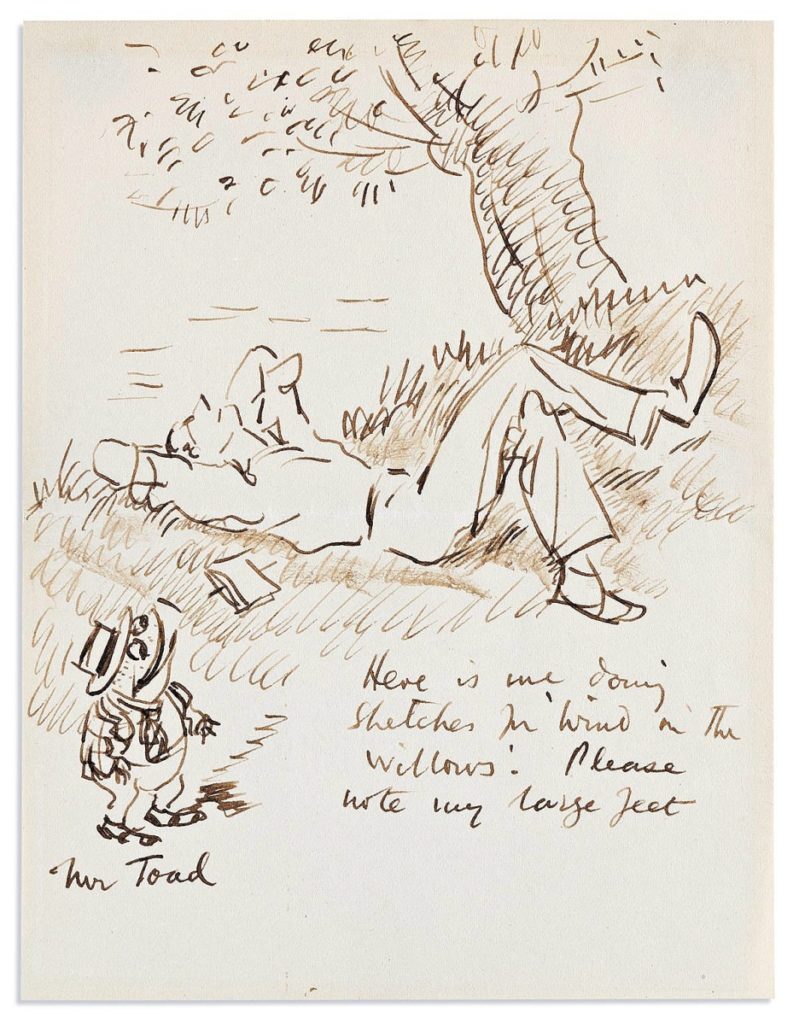
Ernest Shepherd did the original illustrations for the Winnie The Pooh books and The Wind in The Willows. This unsigned ink self-portrait shows him reclining under a tree beside Mr Toad. Additionally inscribed with two captions: “Here is me doing / sketches for ‘Wind in the / Willows.’ Please / note my large feet,” and “Mr Toad.” It brought $3,250.
The literature segment of the sale included rarities and first editions by iconic authors such as Virginia Wolfe, Charles Dickens, Mark Twain, Samuel Becket, Lewis Carroll, F. Scott Fitzgerald and many more. In its original, unrestored dust jacket, a first edition of Virginia Wolfe’s Mrs Dalloway brought $30,000. It was published by the Hogarth Press in 1925; only about 2,000 copies were printed. A first edition, first printing, of F. Scott Fitzgerald’s Great Gatsby, in the original publisher’s cloth binding, brought $3,750. A sought-after 1960s American counter-culture rarity was a presentation copy of Richard Farina’s Been Down So Long It Looks Like Up to Me. It was in an unclipped dust jacket, with old repairs, and realized $13,750, far above the high estimate of $2,000. That result may have been due to Swann’s research on the copy, which indicated that it was the first signed or inscribed copy to appear at auction. Also selling quite well was Of Gardens, An Essay by Francis Bacon, an illuminated manuscript which had been bound by Sangorski & Sutcliffe in gold and colors. The frontispiece included a miniature painting of peacocks in a formal garden, which was also detailed in gold. Offered with a high estimate of $1,200, it earned $10,400. A first American edition, first impression, of J.R.R. Tolkien’s The Hobbit or There and Back Again, with an illustration of a bowing Hobbit on the title page, traveled to $6,750.
Two first editions of Nineteenth Century American classics each earned $27,500, tying for the second highest price of the day. Herman Melville’s Moby-Dick; or, The Whale was one. This copy was a first edition in the first state binding. It contained 35 passages and the epilogue that had been omitted from the English edition, which had been published a month earlier. Swann’s catalog notes, “…Moby Dick was a complete practical failure, misunderstood by the critics and ignored by the public…in 1853 the Harpers’ fire destroyed the plates…and most of the copies remaining in stock (only about 60 copies survived the fire).” There were a few choices for fans of Melville. A three-volume set of Moby-Dick, illustrated by Rockwell Kent sold for $11,250. There were four other Melville titles: Mardi: and a Voyage Thither (1849), Omoo: A Narrative of Adventure in the South Seas (1847); Pierre; or, the Ambiguities (1852); and, The Piazza Tales (1856).
A very fine first-printing copy of the first American edition of The Adventures of Tom Sawyer was the other book to sell for $27,500. It was published in 1876 by the American Publishing Company. It was in its original blue cloth binding, stamped in gilt and black. A first edition, later printing of F. Scott Fitzgerald’s Tender is the Night, with a presentation inscription that read “For Holger [Lundbergh] / from his [?] / devotedly / Scott Fitzgerald” realized $4,250.
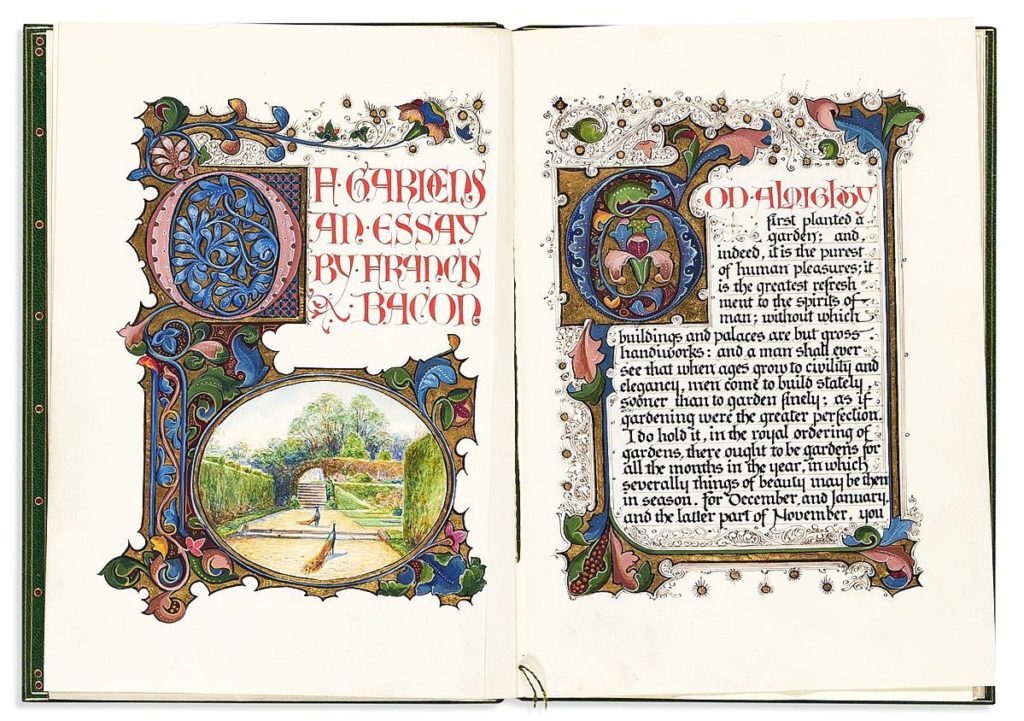
This cased illuminated manuscript, Of Gardens, An Essay by Francis Bacon, elaborately bound by Sangorski & Sutcliffe, realized $10,400.
Books for children did well. A signed presentation copy of a later edition of Lewis Carroll’s Alice’s Adventures in Wonderland realized $6,500. Two “Christmas” books each earned $10,625. One was Clement C. Moore’s A Visit from St Nicholas. It was a well-preserved rare first fully illustrated book-length edition of ‘Twas the Night Before Christmas, one of only two copies known to exist. The other Christmas book in the sale was a first edition first issue copy of Charles Dickens’ A Christmas Carol. The first edition had a complicated bibliographic history, which was discussed in Swann’s description. A second edition of the same title earned $5,750; an 1844 fourth edition earned $2,000. Prior to the sale, John Larson, Swann’s book specialist had said that interest in these three books was especially strong. A pop-up 1930 two-volume limited edition of Jonathan Swift’s Gulliver’s Travels, numbering 170 from an edition of 195, reached $6,000. Published in 1930 by the Cresset Press, it was elaborately bound in a leather case.
By the time the bidding was done, the sale totaled $749,822, and, with a sell-through rate of 89 percent, 278 of the 313 lots found buyers.
Prices quoted include the buyer’s premium as reported by the auction house. For additional information, 212-254-4710 or www.swanngalleries.com.

